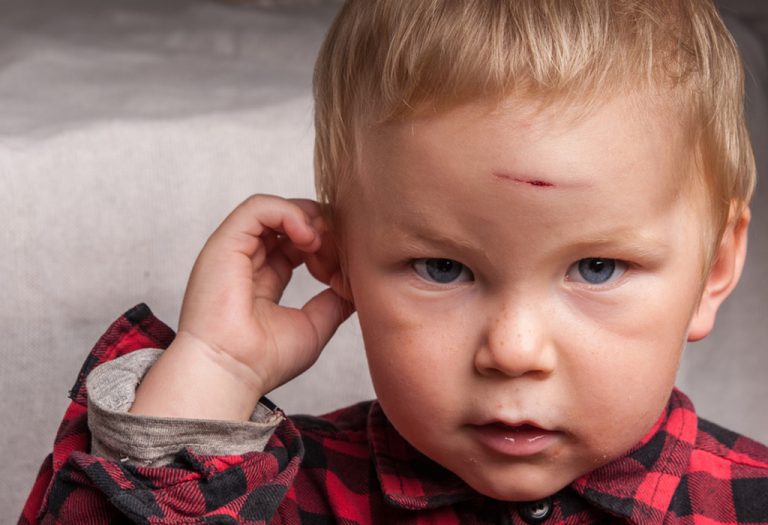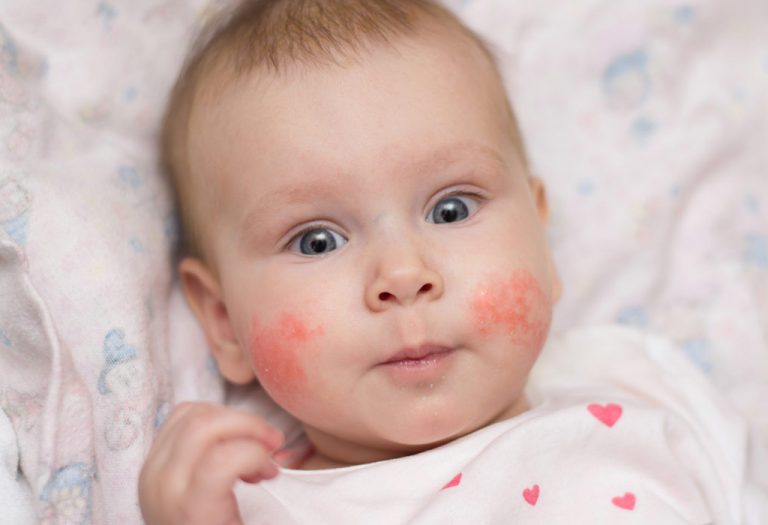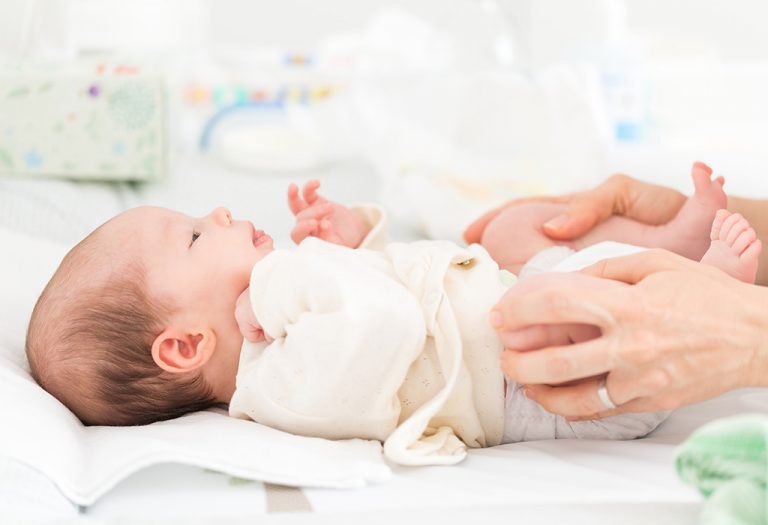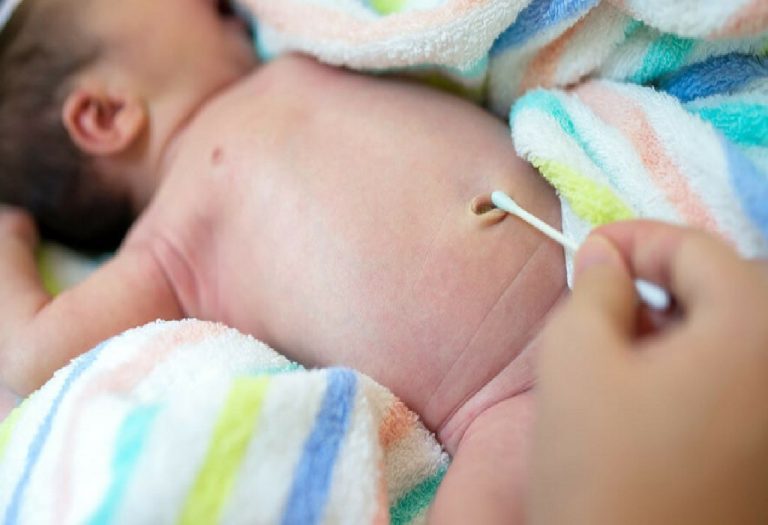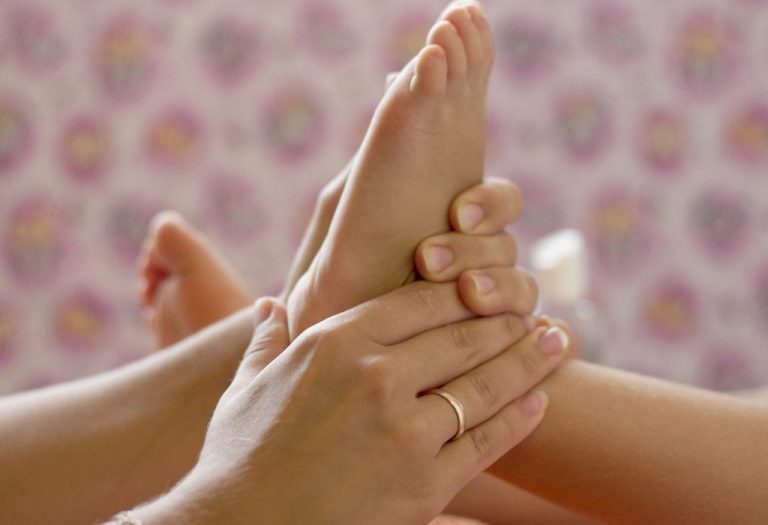Head Injury in Children – Types, Causes & Prevention
Children of all ages are susceptible to head injuries. However, toddlers may be more vulnerable to head bumps while learning to crawl or walk. Bumps and superficial cuts on the head and face normally heal without much trouble. Even a minor cut on the head may bleed heavily, which can be distressing. But the injury may not be so serious and can usually be stopped with home care. But in case of internal head injury in children, it is difficult to tell whether the brain has suffered a concussion or a more serious grievance. This article will help you understand the types of head injuries, symptoms, and what you can do to treat them.
What Is a Head Injury?
Head injuries constitute one of the main reasons for disability and deaths in kids. The term head injury can broadly be used to describe the huge range of injuries that happen to the skull, scalp, brain and the blood vessels, muscles, bones and tissues in the head of the child (1). In simpler terms, any trauma or injury inflicted on to any structure of the head can be called a head injury.
A head injury may be a slight bump, bruise or a minor cut on the head, or a more traumatic brain injury (TBI) because of a concussion, open (penetrating) wound, a deep cut, internal bleeding, or fractured skull bones.
Types of Head Injuries
Head injuries may be of two types – internal head injuries and external head injuries. Internal injuries are normally related to the brain or skull, including the blood vessels inside the skull, whereas external injuries may usually concern the scalp (2).
1. Internal Head Injury
Our brain is cushioned by cerebrospinal fluid (CSF) to prevent damage to it. But in case the head suffers a serious blow, it can knock the brain or cause injury to the blood vessels, muscles or bones of the skull. Therefore, internal head injuries are usually considered serious and can also be life-threatening.
Symptoms
In case the child shows the following symptoms after suffering an internal head injury, call the doctor immediately. Some of the symptoms can be:
- The child remains unconscious for several seconds
- Heavy bleeding which shows no signs of reducing or stopping
- The child suffers a seizure
- The child experiences partial numbness or weakness in the body
- Disturbed speech and vision (double vision)
- The child is unable to recall the incident or repeatedly asks the same questions
- Abnormal breathing
What You Can Do
First and foremost, it is important to remain calm after the child has had an accident. Maintaining calm will help you assess the situation properly. It may not be easy to establish the possible extent of damage in case of an internal head injury. Hence, it is always sensible to consult a doctor. It is also advisable to observe your child for the next 24 hours after the accident for any worrying signs. You may like to refrain from giving any medication to your child on your own without consulting the doctor.
If your child is conscious, try your best to calm your child as much as possible. Avoid applying direct pressure to the injury. It can be detrimental in case there is a fracture. In case the child is vomiting, turn him onto his side to prevent choking.
If your child is unconscious, avoid moving your child. Keep his head and neck straight to avoid any likely damage to the spine or neck. If there is a seizure, loosen any clothing that may be tight, especially around the neck. Check your child’s body for any injuries to provide first aid and call or visit the doctor immediately.
2. External Head Injury
External head injuries, even insignificant cuts tend to bleed a lot as the scalp and face have numerous blood vessels very close to the skin’s surface. In case of a blow or injury to the head, blood or fluid from the veins of the scalp may leak and get collected under the scalp leading to swelling or a “goose egg” on the head. The bump may take several days to subside and disappear.
Symptoms
In the occurrence of an external head injury, a child may display the following symptoms:
- A severe headache
- Recurrent vomiting
- Loss of consciousness for a few seconds
- Bruising around eyes or behind ears
- Difficulty in talking and walking normally
- Clear fluid or blood flowing from nose or ears
- Swelling or “dent” in the head
What You Can Do
In case of any bleeding, applying pressure over the wound with a clean bandage or cloth for some time may be helpful. But if the cut is significant, medical intervention may be required. Placing a cold compress on a bump may prove useful in relieving bruising and swelling of the skin. It may also help in easing out some of the pain. When applying an ice pack, wrapping it in a clean, soft cloth can be a good idea. Putting ice directly on the bare wound may injure it further.
Refrain from removing any object that may have gotten wedged in the wound. Observe your child for the next 24 hours. If your child wants to sleep after the injury, he may do so, but keep a constant check on him while he sleeps. If he shows any symptoms of an internal injury or you feel something is unusual, call the doctor instantly.
Causes of Head Injury in a Child
Head injuries in children are common and can occur due to various accidents or falls. While most are minor, some can be serious, so understanding the causes helps in prevention (3).
- Toddlers and young children often fall from beds, stairs, playground equipment, or while running.
- Collisions or sudden stops can cause head trauma, even if the child is in a car seat.
- Contact sports like football or cycling without a helmet can lead to head injuries.
- Accidents involving heavy toys, balls, or falling objects can harm a child’s head.
- Violent shaking or blows to the head can cause severe brain damage.
- Riding without a helmet or losing balance can result in head injuries.
Diagnosis of Head Injury in Kids
Head injuries in children can range from mild bumps to serious trauma, requiring prompt evaluation. Doctors use a combination of physical exams, symptom assessment, and imaging tests to determine the severity and necessary treatment (4).
- Medical History & Symptom Check – The doctor will ask about how the injury happened and look for signs like vomiting, dizziness, or loss of consciousness.
- Physical Neurological Exam – Tests for balance, reflexes, pupil response, and coordination help assess brain function.
- Glasgow Coma Scale (GCS) – A scoring system (eye, verbal, and motor responses) to measure the severity of brain injury.
- CT Scan (Computed Tomography) – Used in moderate to severe cases to detect bleeding, skull fractures, or brain swelling.
- MRI (Magnetic Resonance Imaging) – Provides detailed images of the brain, often used for ongoing symptoms or subtle injuries.
- Observation & Monitoring – For mild cases, doctors may recommend watching the child for worsening symptoms over 24-48 hours.
Complications of a Head Injury in Children
While most head injuries in kids are mild, some can lead to serious complications if not treated promptly. Recognising these risks and complications helps ensure timely medical intervention and better recovery (5).
- Concussion Symptoms (Post-Concussion Syndrome) – Persistent headaches, dizziness, memory problems, or mood changes lasting weeks or months after the injury.
- Brain Bleeding (Haemorrhage) – Internal bleeding (epidural/subdural hematoma) can increase pressure on the brain, requiring emergency surgery.
- Skull Fractures – A cracked skull may damage brain tissue or lead to infections like meningitis if left untreated.
- Seizures – Some children develop seizures immediately or even months after a traumatic brain injury.
- Cognitive & Behavioural Changes – Trouble concentrating, learning difficulties, irritability, or personality shifts due to brain damage.
- Long-Term Neurological Damage – Severe injuries can cause permanent motor skill issues, speech problems, or developmental delays.
Ways to Prevent Head Injuries in Kids
Here are some of the ways to prevent head injuries in kids:
- Make sure your kid wears suitable protective gear while playing sports.
- Ensure your kid wears a seatbelt while travelling in a vehicle.
- Childproofing your house may help in preventing household accidents.
- Refrain from slapping or violently shaking your baby in anger to avert baby head injury.
- Be aware of your kid’s abilities and try and anticipate the risk factors for him. It pays to be smart and to be one step ahead of your child.
What Is a Concussion?
A concussion may occur when the head suffers a closed injury. A closed injury refers to a head injury which does not breach the skull but temporarily alters the normal brain functioning. The injury may be the result of a fall, a hard blow or violent shaking. Recurrent concussions can cause permanent damage to the brain.
Some of the signs of concussion in a baby can be blurred vision, slurred speech, dizziness, vomiting, temporary memory loss, headaches, and difficulty in balancing. But usually, most of the effects of a concussion are temporary, and a child may recover completely after some time without any long-term damage (6).
When to Consult the Doctor
While many head injuries in children are minor, some require urgent medical attention. Contact your doctor or seek immediate emergency care (or go to the ER) if your child has:
- They seem dizzy or confused
- Have a headache that won’t go away
- Are unusually sleepy
- Passed out (even briefly)
- Vomited more than once
- Trouble walking or talking
- A seizure
- One pupil is bigger than the other
FAQs
1. Can a head injury cause sudden personality changes in a child?
Yes, even mild traumatic brain injuries can sometimes lead to irritability, mood swings, or uncharacteristic behaviour due to subtle brain inflammation or concussion effects.
2. Do delayed symptoms appear days after a head injury?
In rare cases, symptoms like dizziness, memory issues, or sleep disturbances may emerge 24–72 hours later, especially with concussions. Close monitoring is key.
When to seek medical help and how to provide first aid are the most likely questions asked by parents when it comes to children’s head injuries. It is natural to worry about head injuries, but, it is important to understand that most of these head injuries are minor and may not possibly result in any serious complications. It is very rare that a child suffers a significant head injury which can cause brain injury or internal bleeding.
References/Resources:
1. Johns Hopkins Medicine – Head Injury
2. Cleveland Clinic – Head Injury
4. Nationwide Children’s Hospital – Head Injury in Children
5. NHS – Head injury in children
Also Read:
Chest Pain in Kids
Tips for Headache in Kids
Childhood Hearing Loss
First-Aid for Common Injuries for Kids
Was This Article Helpful?
Parenting is a huge responsibility, for you as a caregiver, but also for us as a parenting content platform. We understand that and take our responsibility of creating credible content seriously. FirstCry Parenting articles are written and published only after extensive research using factually sound references to deliver quality content that is accurate, validated by experts, and completely reliable. To understand how we go about creating content that is credible, read our editorial policy here.





